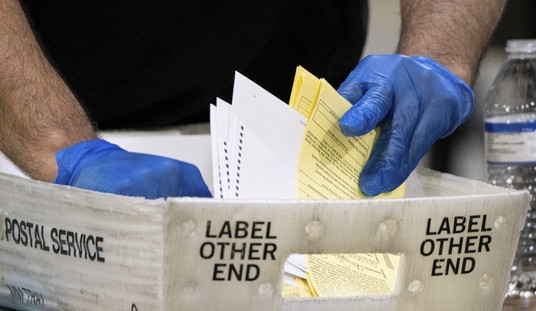The Associated Press reports that COVID-19 testing has cratered in many areas of the country and that sites are closing. In Los Angeles County, they were taking 350,000 a few weeks ago, and now the 180 sites are operating at one-third of their capacity. This finding is not surprising as cases in the U.S. have fallen nearly 70% since the peak in early January. If you think the AP reports this as good news, you would be mistaken:
“It’s shocking how quickly we’ve gone from moving at 100 miles an hour to about 25,” said Dr. Clemens Hong, who leads the county’s testing operation.
After a year of struggling to boost testing, communities across the country are seeing plummeting demand, shuttering testing sites or even trying to return supplies.
The drop in screening comes at a significant moment in the outbreak: Experts are cautiously optimistic that COVID-19 is receding after killing more than 500,000 people in the U.S. but concerned that emerging variants could prolong the epidemic.
“Everyone is hopeful for rapid, widespread vaccinations, but I don’t think we’re at a point where we can drop our guard just yet,” said Hong. “We just don’t have enough people who are immune to rule out another surge.”
Approximately 28.5 million Americans tested positive for COVID-19 since the beginning of the pandemic. Considering there have been about 500,000 fatalities credited to the virus, approximately 28 million Americans have recovered and have natural immunity. Research shows that recovered patients have an antibody response and a longer-term immune response in T cell and B cell reactivity. The responsiveness of these cells can prevent or reduce the severity of subsequent COVID-19 infections.
Because of the number of mild and asymptomatic cases, 28 million underestimates the number of Americans who have an effective immune response. Based on observational medical data, Dr. Marty Makary from Johns Hopkins estimates that 55% of Americans have some level of natural immunity:
In large part because natural immunity from prior infection is far more common than can be measured by testing. Testing has been capturing only from 10% to 25% of infections, depending on when during the pandemic someone got the virus. Applying a time-weighted case capture average of 1 in 6.5 to the cumulative 28 million confirmed cases would mean about 55% of Americans have natural immunity.
Makary notes that approximately 15% of Americans have been vaccinated. Some estimates forecast that 150 million Americans will receive vaccines by the end of March. Based on this data, Makary predicts that low levels of infection will be the norm by April. The Centers for Disease Control (CDC) no longer recommends the testing frequency and testing of asymptomatic individuals that the AP article recommends. As of Saturday, the testing guidance reads:
Not everyone needs to be tested.
Who should get tested
- People who have symptoms of COVID-19.
- People who have had close contact (within 6 feet of an infected person for a cumulative total of 15 minutes or more over a 24-hour period) with someone with confirmed COVID-19.
- People who have taken part in activities that put them at higher risk for COVID-19 because they cannot socially distance as needed, such as travel, attending large social or mass gatherings, or being in crowded indoor settings.
- People who have been asked or referred to get testing by their healthcare provider, local or state health department.
If you do get tested or take an at-home test because you have COVID-19 symptoms or have had a close contact with someone who has it, you should self-quarantine at home pending test results and follow the advice of your healthcare provider or a public health professional.
Considering this change, it should be no surprise that the number of tests is declining. With lower rates of infection, it is not even clear that remote testing centers are needed. The American Journal of Medicine recently published an article recommending several options for early outpatient treatment of COVID-19 based on meta-analyses of global studies on several classes of drugs. Effective outpatient management is best accomplished by moving testing back into the primary care provider’s office through in-person evaluation or telemedicine, where a patient can receive continuity of care. The goal should be to reduce severe illness and hospitalization.
It should also make you wonder why some states and groups advising the Biden administration contradict the CDC. According to the AP article:
Some experts say the country must double down on testing to avoid flare-ups from coronavirus variants that have taken hold in the U.K., South Africa and other places.
“We need to use testing to continue the downward trend,” said Dr. Jonathan Quick of the Rockefeller Foundation, which has been advising Biden officials. “We need to have it there to catch surges from the variants.”
Last week, Minnesota began urging families to get tested every two weeks through the end of the school year as more students return to the classroom.
“To protect this progress, we need to use all the tools at our disposal,” said Dan Huff, an assistant state health commissioner.
There is absolutely no evidence that the natural immune response does not protect an individual from a severe illness caused by reinfection from the COVID-19 variants from the U.K. and other parts of the world. The U.K. variant has been found in Florida and Georgia, and both states still see declining cases at rates similar to the national decline.
It is time to end the panic porn. America is very close to being able to live with COVID-19 rather than in fear of it.










